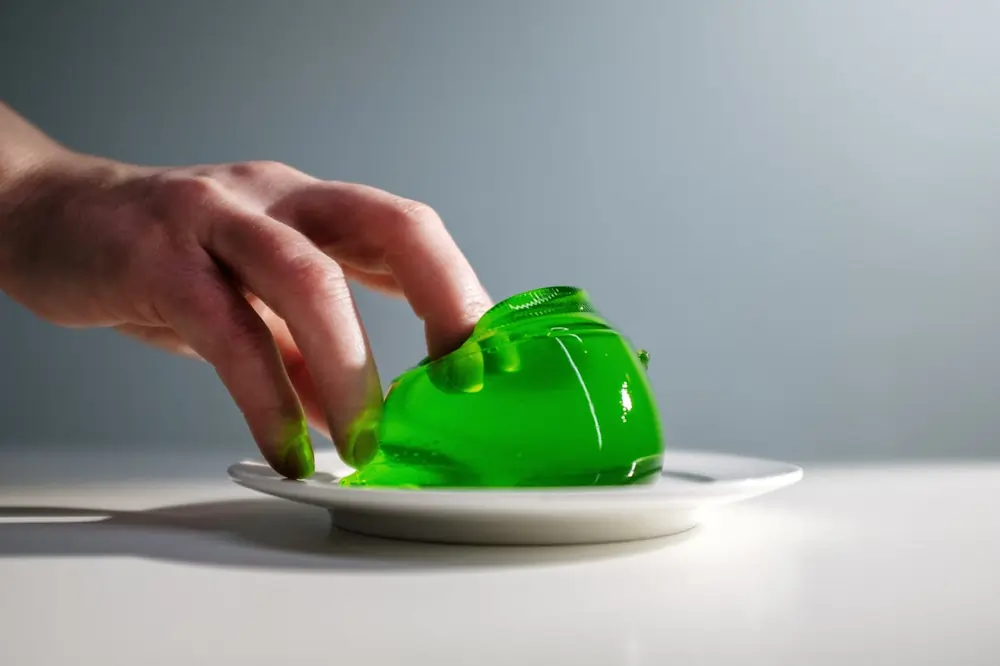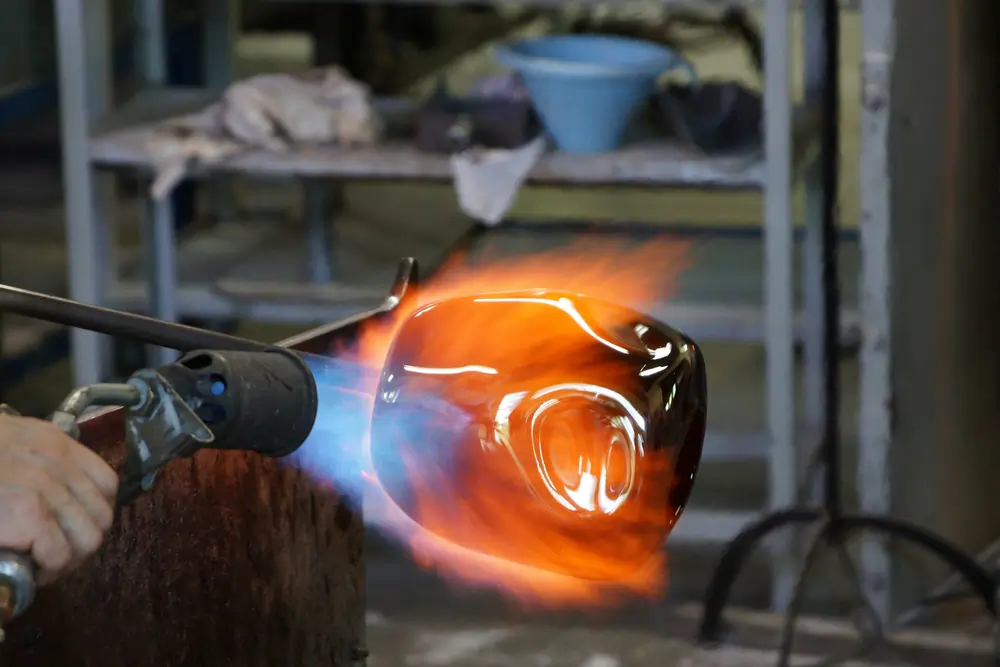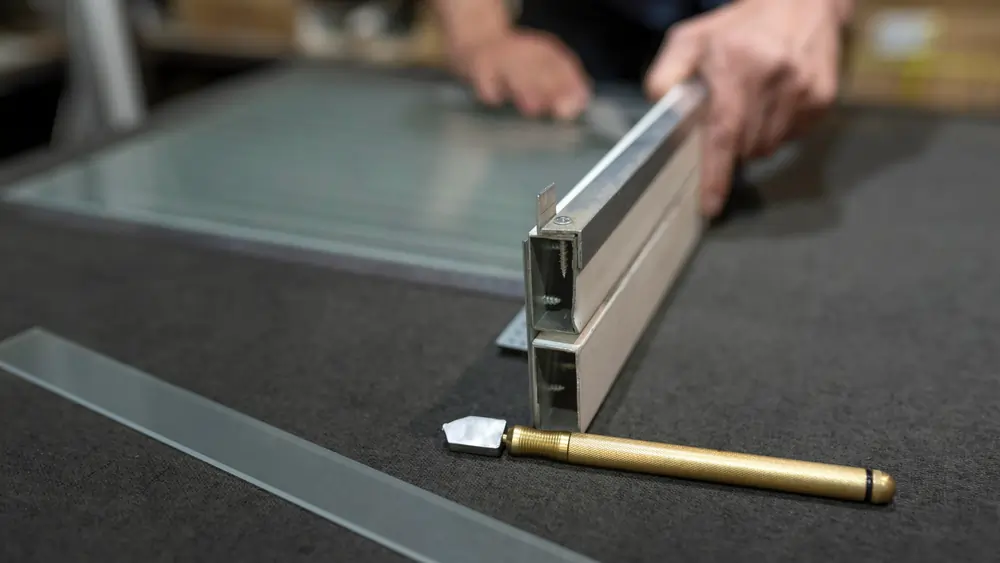Are you worried about safety in your home or workplace? Do you struggle with fragile glass that easily breaks and poses risks? Imagine a world where glass is strong, safe, and versatile. Welcome to the world of tempered glass.
In this comprehensive guide, we’ll explore everything you need to know about tempered glass, also known as toughened glass or safety glass. From its creation process to its wide-ranging applications, we’ll uncover why this remarkable material is revolutionizing industries and improving our daily lives.
Tempered Glass
Tempered glass is everywhere! From your smartphone to your car windows, you’ve probably encountered this highly durable material without even knowing it. But why is tempered glass so popular, and what makes it different from regular glass? Whether you’re considering it for a home renovation or just curious, this guide will break down everything you need to know. We’ll explore the science behind its strength, its everyday uses, and even a few surprising applications you might not expect!
What Is Tempered Glass?
Tempered glass is a type of glass that’s much stronger than annealed glass. The glass tempering process involves heating a piece of glass and then cooling it rapidly to make tempered glass. This glass is designed to break into small, less dangerous glass shards rather than large, jagged pieces.
You often see tempered glass used in glass table tops, glass shelves, and even glass panels for showers. It’s also popular for replacement glass because it’s stronger than annealed glass. If glass is broken, the surface of the glass crumbles into tiny, safer pieces.
While tempered glass is a go-to for many, window film can be an alternative to tempered glass. However, tempered glass is often used because it’s much harder and more durable. Whether it’s for a glass table or custom glass installations, this strengthened glass is a solid choice.
Tempered glass is a type of safety glass that’s been treated to increase its strength and safety. Unlike regular glass, it’s designed to withstand significant impact and thermal stress.
The Tempering Process
 The magic happens in the glass tempering furnace. Here’s how:
The magic happens in the glass tempering furnace. Here’s how:
- Heating: The glass is heated to over 600°C (1112°F).
- Rapid Cooling: It’s then rapidly cooled using high-pressure air blasts.
- Stress Creation: This process creates compressive stress on the surface and tensile stress inside.
This tempering process results in glass that’s 4-5 times stronger than standard glass.
Comparison with Other Glass Types
- Regular Glass: Breaks into sharp, dangerous shards.
- Laminated Glass: Two glass sheets with a plastic interlayer. Stays together when broken.
- Tempered Glass: Breaks into small, rounded pieces, reducing injury risk.
Key Benefits of Tempered Glass
One of the key benefits of tempered glass is its strength. It’s much harder than normal glass because it’s made from annealed glass via a thermal tempering process. This process involves heating float glass and then rapidly cooling it, making it four to five times stronger.
Another advantage of tempered glass is its safety. When tempered glass does break, it shatters into small, blunt pieces rather than sharp shards. This is why tempered glass is considered safety glass. Plus, the edges of the glass are less likely to cause injury compared to normal glass.
Tempered glass is designed to withstand high impact and temperature changes, making it ideal for various applications. The glass thickness is uniform, and the layers of the glass are toughened to prevent easy breakage. If glass breakage does occur, glass replacement is straightforward.
Finally, tempered glass is much harder and more durable than clear glass made of tempered glass. The benefits of tempered glass far outweigh those of glass made from annealed glass via other methods. These advantages of tempered glass make it a top choice for safety and durability.
Durability: A Tough Contender
Tempered glass is significantly stronger than regular glass. It can withstand:
- Higher impact forces
- Greater temperature fluctuations
- More weight and pressure
This high-strength glass is perfect for applications where durability is crucial.
Safety: Breaking the Mold
When tempered safety glass does break, it shatters into small, rounded pieces instead of sharp shards. This shatter-resistant glass significantly reduces the risk of severe cuts and injuries.
Heat Resistance: Taking the Heat
 Tempered glass is heatproof glass, capable of withstanding temperatures up to 250°C (482°F). This thermal stress resistance makes it ideal for:
Tempered glass is heatproof glass, capable of withstanding temperatures up to 250°C (482°F). This thermal stress resistance makes it ideal for:
- Oven doors
- Stovetops
- Fireplaces
Scratch Resistance: Tough as Nails
The surface compression of tempered glass makes it more scratch-resistant than regular glass. This feature is particularly valuable for:
- Smartphone screens
- Tabletops
- Glass doors
Aesthetic Appeal: Beauty Meets Function
Clear tempered glass offers a sleek, modern look that’s perfect for contemporary design. Its strength allows for larger, uninterrupted glass surfaces in:
- Glass facades
- Glass partitions
- Glass railings
Common Uses of Tempered Glass in Homes
In homes, you’ll often find tempered glass used in areas like shower doors, windows, and tabletops. This glass is also known as safety glass or toughened glass because when glass is struck, it will break into small pieces rather than sharp shards, reducing the risk of injury from broken glass.
The process applied to the glass, where annealed glass undergoes rapid heating and cooling, strengthens it and makes it more durable. Even though glass cannot be cut or drilled after tempering, you can get glass to your exact specifications before the tempering process. This makes it versatile for various glass products around the home.
When glass is struck with enough force, the breakage of tempered glass happens in a way that the glass stays together, minimizing glass debris. This feature is why it’s often referred to as safety glass. Whether it’s tempered or laminated, adding a layer of glass to areas that need extra strength is a smart choice for home safety.
Shower Doors: Crystal Clear Safety
Glass shower doors made from tempered glass offer:
- Increased safety in wet environments
- Easy cleaning and maintenance
- A modern, open feel to bathrooms
Tabletops and Shelves: Strength Meets Style
 Glass tabletops and shelves made from tempered glass provide:
Glass tabletops and shelves made from tempered glass provide:
- Durability for everyday use
- Resistance to heat from hot dishes
- A light, airy feel to furniture
Windows and Doors: A Clear Advantage
Tempered glass windows and doors offer:
- Enhanced security
- Better energy efficiency
- Compliance with building codes
Kitchen Appliances: Cooking with Confidence
Tempered glass is used in:
- Oven doors
- Microwave doors
- Stovetops
Its heat resistance and durability make it perfect for these high-temperature environments.
Industrial Applications of Tempered Glass
Tempered glass is super handy in industrial settings. It’s way stronger than regular glass and when it breaks, the glass will break into small pieces, making it safer. You’ll see tempered glass panels in places like office buildings and factories. Tempered glass must be used for safety.
In homes, people use tempered glass table tops and door glass for its durability. Heat-strengthened glass is another option, but glass may still crack under pressure. When glass to fracture happens, it keeps the glass together rather than shattering.
In factories, thick glass is often used for machinery guards. Placing glass near high-traffic areas is common, but causing the glass to break can still be a concern. You’ll find glass in several forms to suit different needs.
Automotive Industry: Driving Safety Forward
Automotive glass, including windshield glass, uses tempered glass for:
- Side and rear windows
- Sunroofs
- Mirrors
Architecture: Reaching New Heights
 In high-rise buildings, glass facades made from tempered glass provide:
In high-rise buildings, glass facades made from tempered glass provide:
- Structural integrity
- Energy efficiency
- Stunning aesthetics
Technology: Protecting Our Devices
Screen protectors for smartphones and tablets use tempered glass for:
- Scratch resistance
- Impact protection
- Clarity
Furniture and Interior Design: Form Meets Function
Tempered glass furniture offers:
- Unique design possibilities
- Durability for everyday use
- Easy maintenance
Tempered Glass vs. Regular Glass: Which Is Better?
While both have their place, tempered glass often comes out on top:
| Feature | Tempered Glass | Regular Glass |
|---|---|---|
| Strength | 4-5 times stronger | Standard strength |
| Safety | Breaks into small pieces | Sharp, dangerous shards |
| Cost | Higher | Lower |
| Applications | Safety-critical areas | General use |
Tempered glass is worth the investment for:
- Areas with high traffic or risk of impact
- Applications requiring safety compliance
- Situations involving temperature fluctuations
Regular glass is sufficient for:
- Low-risk areas
- Budget-constrained projects
- Applications not requiring safety glass
Safety Features of Tempered Glass
Tempered glass is called “safety glass” because:
- It’s stronger than regular glass, reducing break risk.
- If it does break, it forms small, rounded pieces.
- These pieces are less likely to cause severe injuries.
Many industries have legal requirements for using safety glass:
- Building codes often require tempered glass in doors and windows.
- Automotive industries must use it for side and rear windows.
- Public spaces often require it for large glass installations.
How to Care for and Clean Tempered Glass
To keep your tempered glass in top condition:
Do’s:
- Use soft, lint-free cloths
- Use mild, non-abrasive cleaners
- Clean regularly to prevent buildup
Don’ts:
- Use abrasive materials or harsh chemicals
- Apply excessive pressure when cleaning
- Use hot water on cold glass (thermal shock risk)
Best cleaning products:
- Commercial glass cleaners
- White vinegar solution
- Mild dish soap and water
By following these tips, you’ll extend the lifespan of your tempered glass and keep it looking crystal clear.
Conclusion
Tempered glass is a fantastic choice for both home and industrial applications, offering durability, safety, and style. Whether you’re upgrading your windows or outfitting your office with sleek glass partitions, knowing the benefits of tempered glass can help you make informed decisions. Got a project in mind? Let tempered glass be the key to unlocking safety and sophistication in your space. Don’t forget to explore more of its amazing features and share your experiences with us in the comments below!
tempered glass offers a compelling solution to many of our glass-related challenges. Its strength, safety features, and versatility make it an excellent choice for a wide range of applications. Whether you’re renovating your home, designing a new building, or simply looking for safer glass options, tempered glass deserves your consideration.
Remember, while tempered glass is tough, it’s not indestructible. Always handle it with care and consult professionals for installation and maintenance. With the right approach, tempered glass can provide you with years of safe, beautiful, and functional use.
So, are you ready to embrace the strength and safety of tempered glass in your life? The future of glass is here, and it’s tougher than ever.

